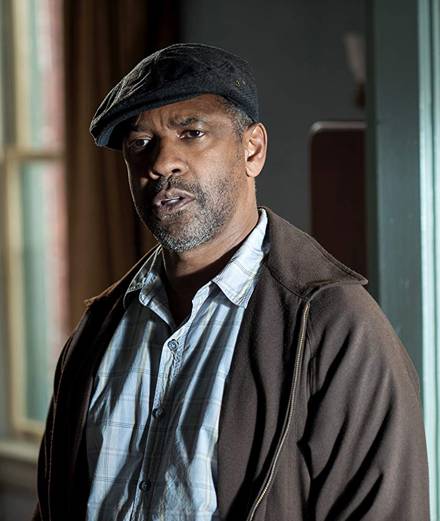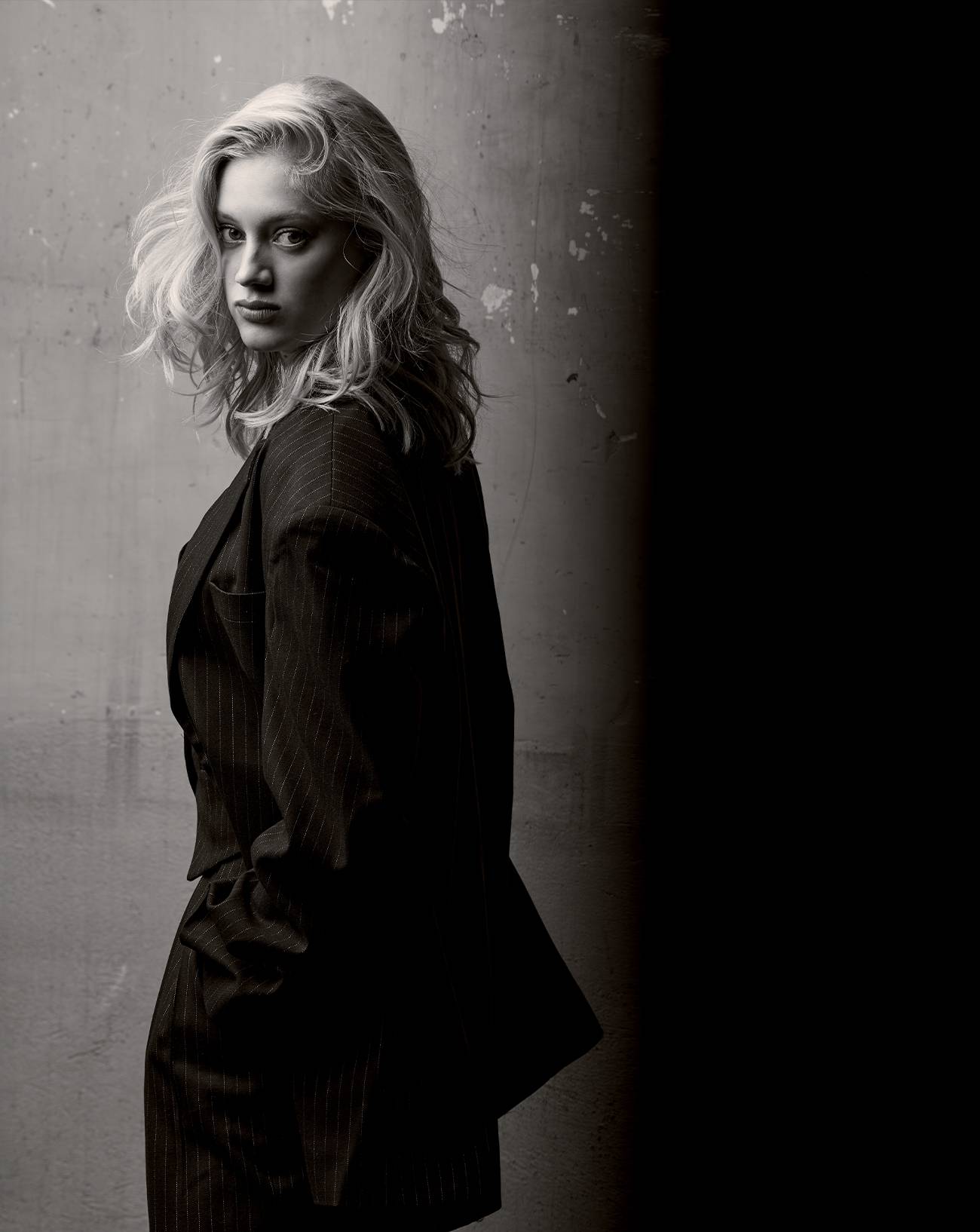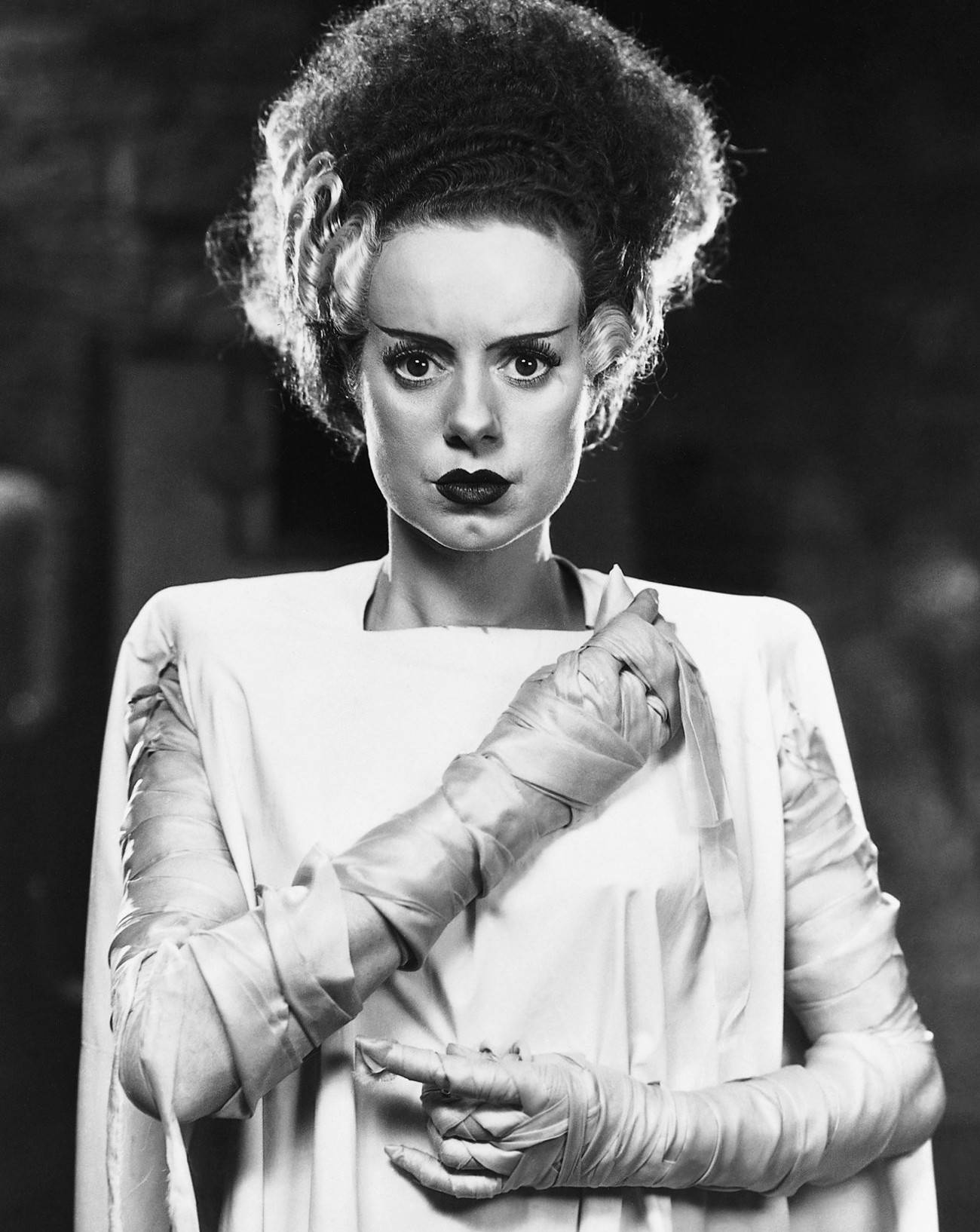Tilda Swintton by Ilya Lipkin
Let's imagine, for a moment, that God has made his comeback and is once again walking among us. Since Jesus’s body has already gone through the horrors of recycling, God has to choose another form of incarnation. In a mischievous mood, he might pick Alanis Morissette, as Kevin Smith did in his 1999 comedy Dogma. Or, looking to appear trendy, a T.V. actor like Gerald “Slink” Johnson from the series Black Jesus. But God is by nature unpredictable, and in the end opts for a singular-looking redhead, the daughter of a Scottish major general, who likes nothing more than sleeping in a glass box (a MoMA happening of 2013) or dressing up as a witch (The Chronicles of Narnia, 2005) or a vampire (Only Lovers Left Alive, 2013). God works in mysterious ways.
Tilda Swinton, for that’s who we’re talking about, wears her status as the Chosen One rather well. It certainly brings her a few advantages. Actress, artist, muse, brand ambassador, she’s constantly fêted. Omnipresent on screens and in museums, her gift for ubiquity backs up the hypothesis of her divine status, she who never tires. Cool and elegant in every situation, we saw with our own eyes that in a packed room, in the middle of summer without air conditioning, beneath spotlights that could liquefy icebergs, Swinton didn’t sweat a drop. As for artificial enhancement, she only uses it to make herself ugly (like for her role as a domineering old bag in the 2013 movie Snowpiercer). If we weren’t fearful of being blasphemous, we’d compare her to those slippery fish that just step between the fingers, for Swinton is formidably elusive. But then that’s quite normal for a deity. Forever on the move, gliding between a film here and a performance there, she surfs the zeitgeist with serenity, lucidity and goodwill. Numéro met up with her.
Numéro: Where does this particular proximity with artists come from?
Tilda Swinton: It’s a tribal link. As soon as I entered that world it became mine. And yet I was brought up in an environment where art didn’t have a connection with creation, but with possession. You didn’t create, you owned the works. The first time I met an artist I was ten years old. My father – a major general – had to have a portrait done. So a painter came to our house several times to do it. I was totally captivated. I can still remember my mother shouting, “The painter’s here!”, and the excitement those words provoked in me. The way she said them… Everything implied that something... let’s say inappropriate was going on! [Laughs.] It was so unusual and foreign. I have to admit to never having actually seen him in the flesh and blood. And yet this “ghostly” presence gave birth to a real fascination. I had to wait until I was 25 to finally meet an artist, and that was Derek Jarman. I was already an “art kid” by then and I was just about to sign up for art school – which I still regret not having done. I spent my life at exhibitions, hanging out with art students. But they weren’t artists per se. No, the first one was Derek.
But you don’t stick to just one artistic milieu, and your career has taken you as far as Hollywood. Has the classic opposition between the “artistic” and the “commercial” become old hat in today’s world?
Lets face it, the world has changed, and we’re obliged to find new ways of financing artistic projects. The situation was very different 20 years ago. In Europe there used to be much more public funding for cinema. The emergence and growing clout of brands in the art world are interesting evolutions in this context. Businesses get interested in art with the same objective of promoting themselves, of course. But what I’ve noticed these days is that their discourse has changed. The brands no longer say to artists, “You belong to us,” or, “We’ll find a way to make you work for us,” but more, “Why don’t you take us with you?” The businesses thus become an important way of financing artistic projects without obliterating the artist’s freedom. Today all forms of creation – cinema, fashion, whatever – require serious investment because the expectations have become increasingly greater. So unless you find patrons or hope in vain for increased state subsidies, it strikes me as necessary to work with business. As long as business sponsors respect the artists and their creativity, of course…
We’re living at a time when economic and digital evolutions are having a huge impact on creativity. Which ones get you excited?
That’s not something I take into account when choosing projects. I’m happy to follow my instinct. If a project interests me I give myself over to it entirely. It’s as simple as that. Occasionally I’ve made choices by integrating these types of “major issues” into my thought processes, but it’s always ended so badly that I prefer to stick to my intuition: only doing things because I personally find them worthy of attention.
You you grew up and still live today in Scotland. Would we be right to conclude that ghosts are your natural living companions?
Isn’t that the case for everyone? Personally I live with them very easily. I’ll tell you a typically Scottish story. It’s about my children’s school. There was discussion about building it on a hill that we’d bought. But a local warned us, “You can’t build a school there, it was where the gallows stood! They used to burn witches there!” It provoked an endless debate. So I ended up saying to them, “Show me a single square foot of Scotland where a witch wasn’t burnt or someone hanged!” What I want to say is there are ghosts everywhere – anywhere where history is present.
And who are the ghosts here with you today?
To tell you that I’d have to ask them first…











